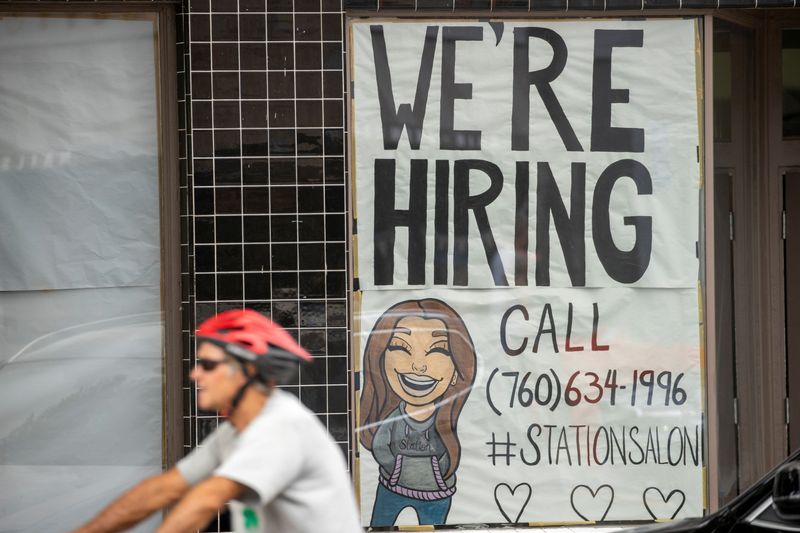By Noreen Burke
Investing.com -- The U.S. jobs report on Friday will be the main economic event of the coming week, with investors hopeful for signs of improvement in the labor market after two months of slower than expected jobs growth. The second quarter is ending, and market watchers will be looking ahead to the next six months after a strong first half to 2021. OPEC+ meets on Thursday with energy traders anticipating another production increase as the demand outlook continues to recover. Meanwhile, Wednesday’s euro zone inflation data could test the European Central Bank’s resolve to look past short term price increases. Here’s what you need to know to start your week.
- Jobs report
The June nonfarm payrolls report is expected to show that the economy added 675,000 new jobs, pushing the unemployment rate down to 5.7% from 5.8%.
With concerns over rising inflation and the strength of the recovery to the fore of investors’ minds, markets will also be looking at other labor market statistics, including wage growth and labor force participation.
Last week Federal Reserve Chairman Jerome Powell reiterated the central bank’s commitment to encouraging a "broad and inclusive" recovery in the labor market, adding that there is still a long way to go, and that support is still needed.
“The very quick job gains of the early recovery essentially involved going back to your old job,” Powell said. “Now it’s actually finding new jobs and that’s a matching function that is more labor intensive and time consuming.”
- Economic data
Ahead of Friday’s jobs report, markets will get updates on pending home sales, ADP private sector payrolls, jobless claims and ISM manufacturing activity.
The ISM data is likely to underline strains on the supply chain that are pushing up costs, boosting the chances that inflation will remain at higher levels for longer.
The calendar also features appearances by several Fed officials, including New York Fed President John Williams, Philadelphia Fed President Patrick Harker, Atlanta Fed President Raphael Bostic, Richmond Fed President Thomas Barkin and Fed Vice Chair Randal Quarles.
- Half time
Investors may be sorry to see the first half of the year end after a strong six months in markets. Global stocks are on track to post their second strongest H1 gains since the turn of the century, but the second half looks harder to predict.
“The market has maybe dodged a few scares and as we look ahead to the second half... there are probably some more risks ahead than there were a few months ago,” James Ragan, director of wealth management research at D.A. Davidson told Reuters.
President Joe Biden’s $1.2 trillion infrastructure deal will continue to boost U.S. markets, but other concerns remain.
The rapid spread of highly contagious Covid virus variants is delaying a return to normality, while the recovery in China, a driver of the global economy, appears to be slowing. Supply chain strains are driving up inflation making it harder for major economies to justify more stimulus, while several emerging market central banks are already hiking rates as a precaution.
- OPEC+ meeting
The Organization of the Petroleum Exporting Countries and allies, known as OPEC+ will hold a series of meeting in the coming week to review the situation in the global oil market ahead of an official meeting on Thursday.
Thursday’s meeting is expected to result in another boost in output as the demand outlook continues to recover.
Oil prices climbed to their highest since October 2018 on Friday, putting both benchmarks up for a fifth week in a row.
“Crude prices rallied on an improving demand outlook and over expectations the market will remain tight as OPEC+ is likely to only deliver a small boost to output at the July 1st ministerial meeting," Edward Moya, senior market analyst at OANDA told Reuters.
- Euro zone inflation
The euro zone is to release flash June inflation figures on Wednesday as the debate around rising price pressures continues.
Euro zone inflation rose above the ECB’s 2% target in May, but ECB chief economist Philip Lane has dismissed inflation pressures as temporary, pointing to weak wage growth.
But other ECB board members have begun to publicly consider the possibility that recent price spikes caused by supply bottlenecks could turn into a longer-term trend. The great debate continues.
--Reuters contributed to this report
